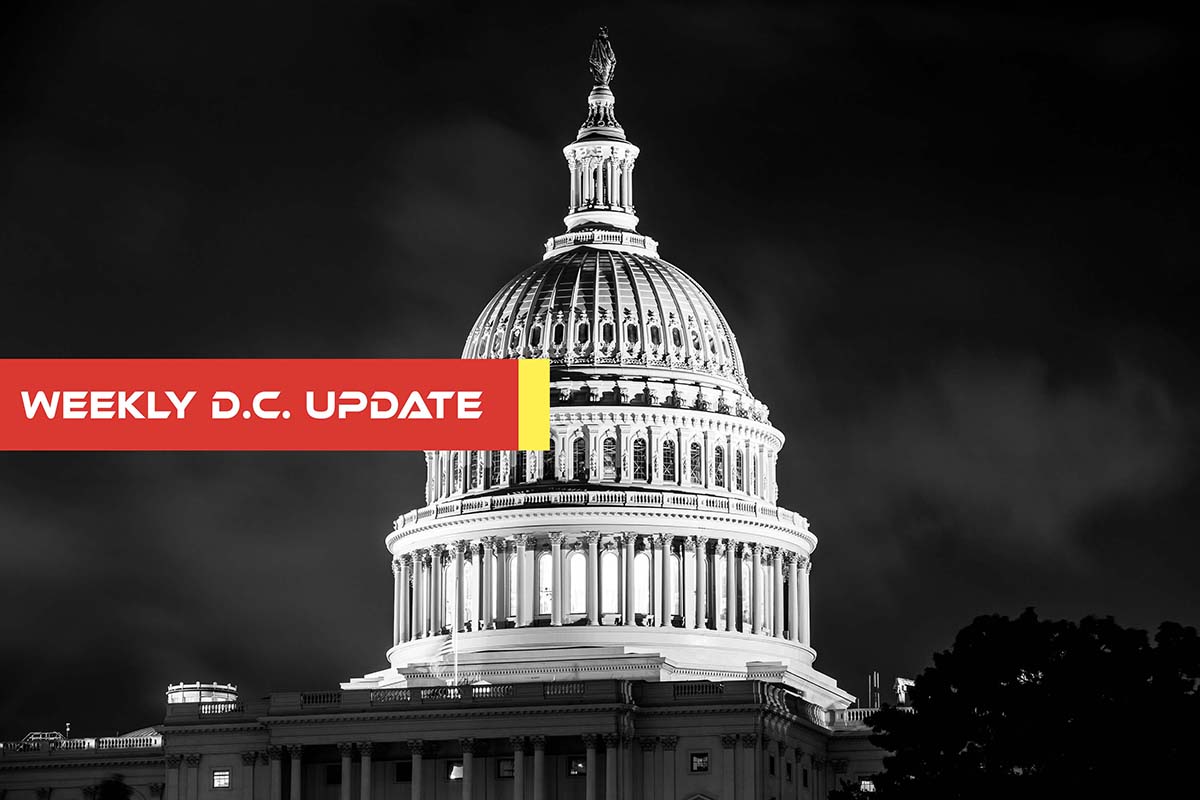Each week, Native News Online brings you the latest Indian Country news and moves from Washington, D.C.

Interior Secretary Deb Haaland Delivers Her Bears Ears and Grand Staircase National Monuments Recommendations to President Biden
Interior Secretary Deb Haaland has submitted her recommendations on the Bears Ears and Grand Staircase on Wednesday according to a court filing Thursday in a legal brief.
The recommendations have not been made public. A spokesperson at the U.S. Department of the Interior would not comment on the recommendations.
Late in his presidency, President Barack Obama proclaimed Bears Ears a national monument that included about 1 million acres of public land managed by the Bureau of Land Management and 290,000 acres managed by the US Forest Service.
Want more Native News? Get the free daily newsletter today.
The Grand Staircase-Escalante was declared a national monument by President Bill Clinton in 1996.
Both sites are considered sacred by American Indian tribes in the region.
By presidential proclamation, in 2017 President Donald Trump ordered an 85 percent reduction of Bears Ears and about 50 percent reduction in size of Grand Staircase-Escalante. The intention was to open up energy exploration in the areas reduced in size.
At the beginning of his administration, President Joe Biden issued through Executive Order 14008 a review of the two national monuments by the U.S. Dept. of the Interior.
Haaland visited both national monuments in April for fact-finding purposes before making her recommendations to the president. While there she met with tribal, state and local leaders who had opposing views.
“Just because the sacred sites aren’t within exterior boundaries and tribes, it doesn't mean that we shed our obligation to care about those sites,” Haaland said after her April visit to the sites. “Regardless of where these sacred sites are, if they're traditional and historical, and we have learned that it's our obligation to care for them. We will do that until we die.”
BIA Issues Final EIS for Moapa Band’s Proposed Southern Bighorn Solar Project
The Bureau of Indian Affairs on Thursday issued a Final Environmental Impact Statement (FEIS) for the Moapa Band of Paiute Indians’ proposed Southern Bighorn Solar Project (“Project”).
The Project would help advance the Biden-Harris administration’s all-of-government approach toward its ambitious renewable energy goals that will create jobs, boost local economies, and help address economic injustice.
“The Moapa Band of Paiutes’ Southern Bighorn Solar Project has the potential to bring sustainable energy and jobs to their people,” Principal Deputy Assistant Secretary – Indian Affairs Bryan Newland said. “Renewable energy can be an important part of a Tribal economy that can raise the quality of life in Tribal communities while adding to the Nation’s clean energy supply.”
The Project includes two solar energy ground leases providing for the construction, operation and maintenance, and eventual decommissioning of two solar electricity generation and battery energy storage facilities. These facilities would be located on up to 3,600 acres of tribal trust land within the Moapa River Indian Reservation located in Clark County, Nevada, about 40 miles northeast of the city of Las Vegas.
The BIA published a Notice of Availability for the FEIS in the Federal Register on June 3, 2021. The BIA published a Draft Environmental Impact Statement (DEIS) for the Project in March with a 45-day period for review and comment.
Information about the Project, including the FEIS, is available on its website.
Choctaw Nation of Oklahoma Received $4 Million Economic Development Administration Grant
The Department’s Economic Development Administration (EDA) announced that they are awarding a $4 million CARES Act Recovery Assistance grant to the Choctaw Nation of Oklahoma, Durant, Oklahoma, to build an operations center at the Choctaw Nation Emerging Aviation Technology Center.
“The Choctaw Nation of Oklahoma has a bold and ambitious vision for the future, and in particular we are optimistic about the benefits to society that future transportation technologies will bring,” Chief of the Choctaw Nation of Oklahoma Gary Batton said. “The facility that will be built with this grant will be a key centerpiece of our advanced Emerging Aviation Technology Center in southeastern Oklahoma, which will help the region recover from the Covid-19 pandemic, retain and create jobs, attract private investment, and advance economic resiliency throughout the region.”
More Stories Like This
Native News Weekly (August 25, 2024): D.C. BriefsUS Presidents in Their Own Words Concerning American Indians
NDAA passes House; Lumbee Fairness Act Advances
NFL, Vikings to Host Native All-American Game, Youth Flag Clinic
Senate Committee on Indian Affairs Passes 12 Bills to Strengthen Tribal Communities
Help us defend tribal sovereignty.
At Native News Online, our mission is rooted in telling the stories that strengthen sovereignty and uplift Indigenous voices — not just at year’s end, but every single day.
Because of your generosity last year, we were able to keep our reporters on the ground in tribal communities, at national gatherings and in the halls of Congress — covering the issues that matter most to Indian Country: sovereignty, culture, education, health and economic opportunity.
That support sustained us through a tough year in 2025. Now, as we look to the year ahead, we need your help right now to ensure warrior journalism remains strong — reporting that defends tribal sovereignty, amplifies Native truth, and holds power accountable.
 The stakes couldn't be higher. Your support keeps Native voices heard, Native stories told and Native sovereignty defended.
The stakes couldn't be higher. Your support keeps Native voices heard, Native stories told and Native sovereignty defended.
Stand with Warrior Journalism today.
Levi Rickert (Potawatomi), Editor & Publisher

